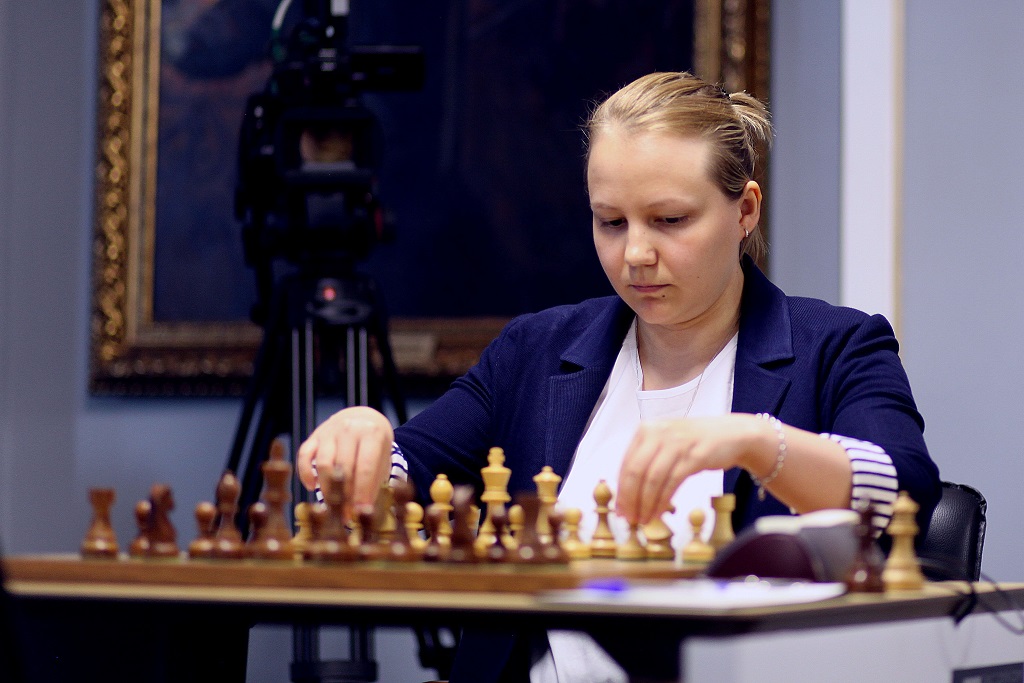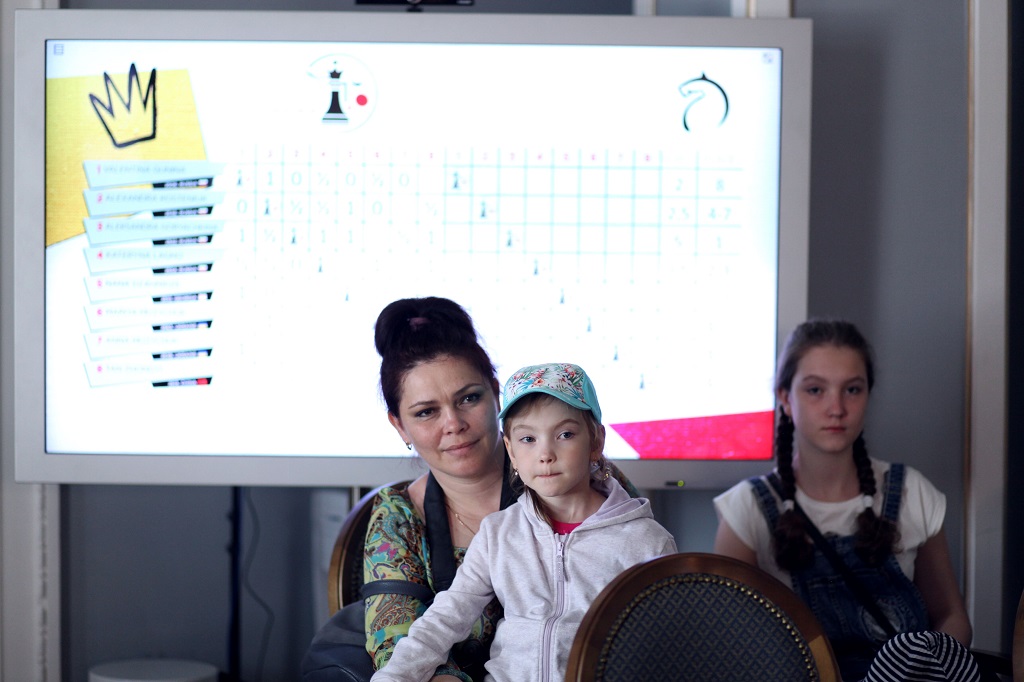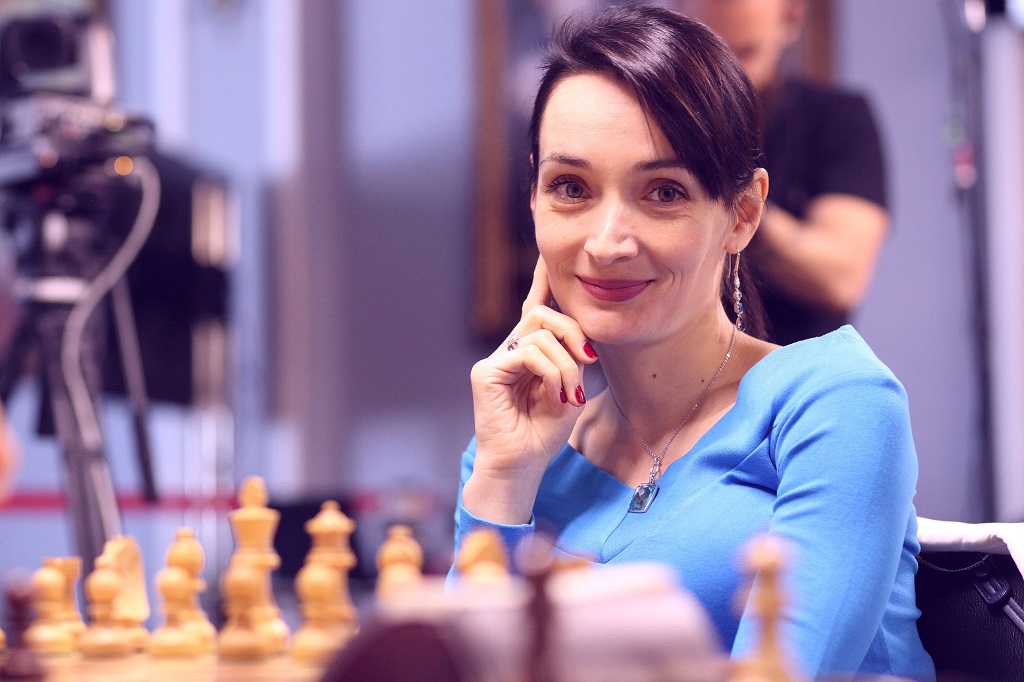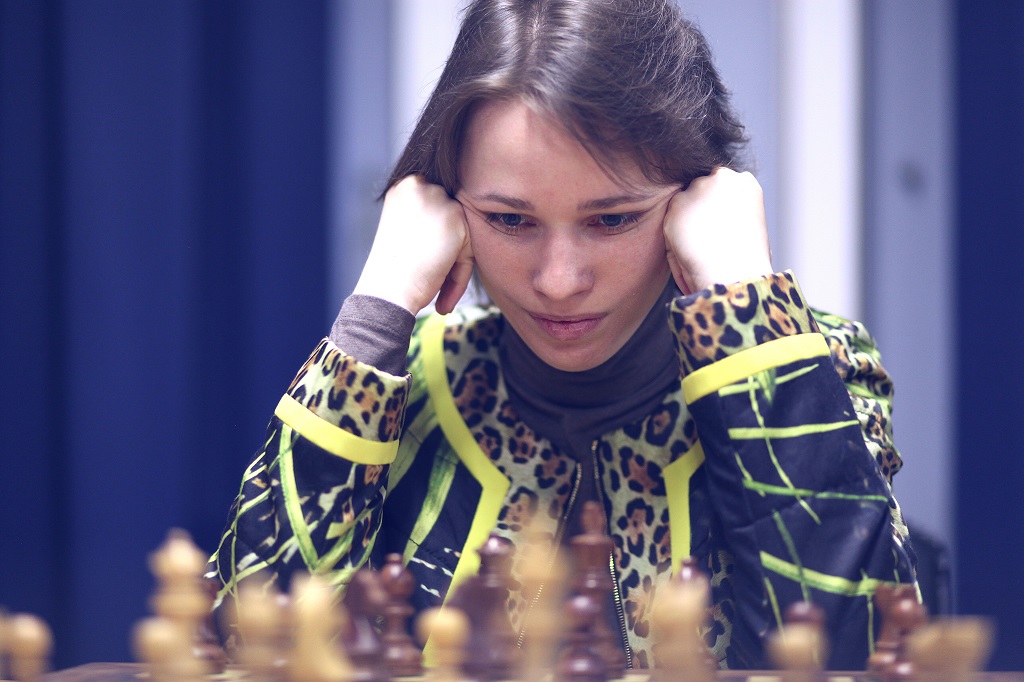


Few round robin tournaments nowadays last fourteen rounds, with the Candidates a big exception, given its importance in the World Championship cycle. On Saturday, the all-play-all event in Kazan reached midpoint, as all the players faced each other once. With seven rounds still to go, anything can happen, but for the time being Aleksandra Goryachkina is the clear favourite on 5½/7 points.
Kateryna Lagno and Nana Dzagnidze, who share second place, drew their round seven encounter. Naturally, they are also paired up to play in the tournament's last round, in what might easily be a deciding match-up. Meanwhile, the only winner of the day was Valentina Gunina, who left the cellar by taking down Tan Zhongyi.

The future of chess? | Photo: Anastasiya Karlovich
Chinese players have been trying out the Petroff Defence with Black for a while now (Wang Yue brought it to fame in the elite some years ago). Tan Zhongyi used the Russian setup against Gunina and followed theory until move twelve, when she strangely decided to give up the bishop pair. In a queenless middlegame, Tan gave up an exchange for two pawns, but Valentina did not take long to give the exchange back:
After 36.♖cxc7 ♝xc7 37.♖xc7, White is a pawn down but has a strong initiative and the better minor piece. Gunina kept her rook on the seventh rank and activated her king. Later on, on move 47, her opponent made a last mistake:
By now, the commentators were quite sure that Valentina would win, but Black's 46...♜f1 — better was 46...♜e3 — only precipitated the predicted outcome. Tan Zhongyi resigned after 47.♔e6 ♚d8 48.♔d6 ♜e1 49.♖b7.

Tan Zhongyi | Photo: Anastasiya Karlovich
Out of a Sicilian, which for a while followed a game between Vachier-Lagrave and Keymer from this year's GRENKE Classic, Black gave up a pawn to get some activity. Both Lagno and Dzagnidze declared that they thought this was better for Black, with the latter also confessing that she "loves fighting during the games", which correlates well with what was seen in this game.
After 22...♞a5, White can gain the e6-pawn with 23.♕xd7 ♜xd7 24.♖xe6, but Black gets strong piece activity with 24...♜c8. Lagno found nothing better than to push her h-pawn down the board and, after the time control, when material equality had already been restored, she was the one pushing.
However, Dzagnidze found a way to defend the rook endgame a pawn down and the draw was signed in the following position, with White still a pawn to the good:

Lagno was in the driver's seat at the end of the game | Photo: Anastasiya Karlovich
After a tough start in this tournament, Anna Muzychuk bounced back with a win over Gunina in round six. Against Kosteniuk, the Ukrainian also got a considerable advantage, but did not find a winning shot in the middlegame. Kosteniuk had given up an exchange and was trying to muddy the waters in the centre, and, instead of consolidating her edge, Anna gave White some chances:
Muzychuk continued 28...♞xd6 allowing White to go 29.♘e7 getting some chances on the kingside. Instead, Anna could have played 28...♛f2, when, against 29.♘e7, she has 29...♞c5 30.♕g4 ♜f7 — White will either lose her bishop or allow Black's c-pawn to advance down the board:
In case of 31.♕xc4, 31...♜f4 wins the bishop, while 31.♗c6 runs into 31...c3.
In the game, White still was in the driver's seat, but Kosteniuk started defending resourcefully and found a draw by perpetual check after the time control. Alexandra later confessed that she is not satisfied with the quality of her play.

Former women's world champion Alexandra Kosteniuk | Photo: Anastasiya Karlovich
The sole leader in Kazan had the white pieces and took some risks by giving up a pawn out of the opening. Mariya Muzychuk held Black's position well, though, preventing her rival from getting a big edge with the initiative. The Ukrainian, in fact, consolidated her position and had a chance to get more of an edge:
The former women's world champion played 34...♝c6, which allowed Goryachkina to capture Black's passed c-pawn with 35.♖c7 ♝xg2 36.♖xc4. Instead, Mariya could have opted for 34...a6, when after 35.♘e2 ♜c8 36.♘c3 ♝c6 37.♖b6 ♝xg2 Black's passer on the c-file survives, creating more problems for White.
After the text, on the other hand, White showed great tenacity to defend the position until agreeing to a draw on move 68.

Mariya Muzychuk won the World Championship in 2015 | Photo: Anastasiya Karlovich
Commentary provided by GM Evgeny Miroshnichenko and IM Elisabeth Paehtz